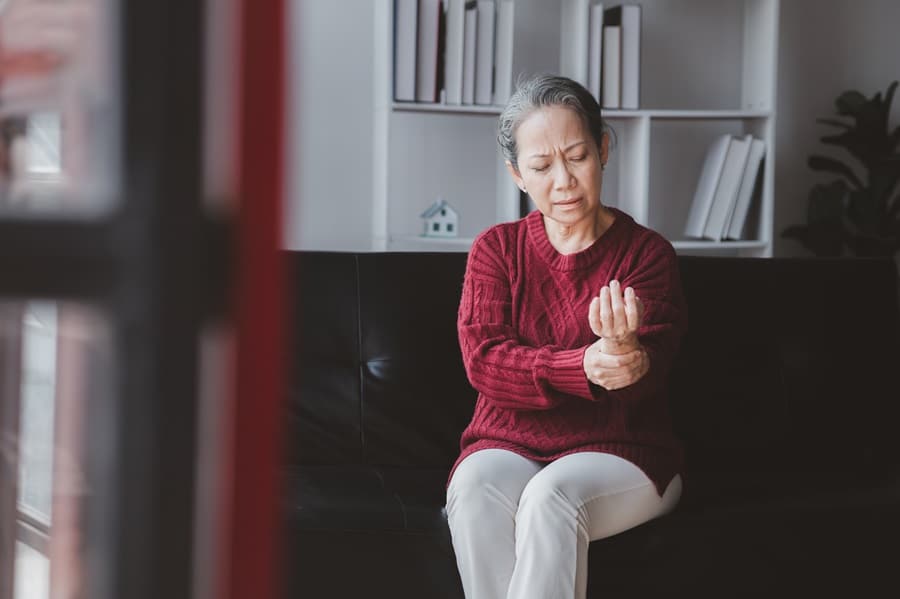Chronic pain is an ongoing issue that affects millions of people worldwide. It can significantly impact an individual’s quality of life, making even simple tasks challenging and causing emotional distress. This article aims to explore alternative ways to manage chronic pain, providing individuals with a variety of options to help them find relief and improve their overall well-being.
Contents
- 1 Understanding Chronic Pain
- 2 Strategies To Manage Chronic Pain Naturally
- 3 Physical Therapies
- 4 Mind-Body Techniques To Manage Chronic Pain
- 5 Dietary Changes And Supplements
- 6 Acupuncture and Traditional Chinese Medicine for Chronic Pain
- 7 Herbal Remedies And Aromatherapy For Chronic Pain
- 8 Biofeedback And Neurofeedback For Chronic Pain Management
- 9 Incorporating Movement And Exercise
- 10 The Bottom Line
Understanding Chronic Pain
Chronic pain is defined as pain that persists for longer than three months, even after the initial injury or illness has healed. It can have various causes, including musculoskeletal issues, nerve damage, and autoimmune conditions, among others. Managing chronic pain is essential, as it can interfere with daily activities, hinder personal and professional relationships, and contribute to anxiety, depression, and other mental health issues.
Strategies To Manage Chronic Pain Naturally
While conventional medical treatments such as prescription medications and surgical interventions can be effective for some individuals, others may prefer or require more natural and alternative methods to manage their chronic pain. The following sections will discuss several alternative strategies for chronic pain management, providing insight into how these approaches can be integrated into an individual’s pain management plan to reduce discomfort and enhance their quality of life.
Physical Therapies

Physical therapies, such as physiotherapy and chiropractic care, can be beneficial for individuals with chronic pain. These treatments often focus on improving mobility, strength, and flexibility, addressing musculoskeletal imbalances that may be contributing to pain. Physiotherapists and chiropractors may use a combination of manual therapy, therapeutic exercise, and modalities such as ultrasound or electrical stimulation to help reduce pain and improve function. However, consulting a qualified healthcare provider before starting any physical therapy program is essential to ensure it is appropriate for your specific needs and condition.
Mind-Body Techniques To Manage Chronic Pain

The mind and body are closely connected, and how we think and feel can significantly impact the experience of pain. Techniques such as mindfulness meditation, guided imagery, and progressive muscle relaxation can help individuals develop a greater awareness of their body’s sensations and learn to manage pain more effectively. These practices often involve focusing on the breath, visualizing a peaceful scene, or progressively tensing and relaxing muscle groups to promote relaxation and reduce pain perception. Research suggests that regular practice of these techniques can lead to lasting changes in pain perception and overall well-being.
Dietary Changes And Supplements

Diet and nutrition play a crucial role in chronic pain management. Certain foods may contribute to inflammation, which can exacerbate pain, while others can have anti-inflammatory effects that may help reduce pain. Examples of dietary changes that can help manage chronic pain include increasing the intake of fruits, vegetables, whole grains, and lean protein sources while limiting processed foods, refined sugars, and unhealthy fats. Additionally, some supplements, such as omega-3 fatty acids, magnesium, and vitamin D, have been shown to help reduce inflammation and improve chronic pain symptoms. However, it’s essential to consult a healthcare provider before making significant dietary changes or starting any supplement regimen.
Acupuncture and Traditional Chinese Medicine for Chronic Pain

Acupuncture and Traditional Chinese Medicine (TCM) have been used for thousands of years to treat various ailments, including chronic pain. Acupuncture involves the insertion of thin needles into specific points on the body to stimulate the body’s natural healing response and encourage pain relief. TCM practitioners may also use herbal remedies, cupping, and moxibustion to treat chronic pain. Several studies have demonstrated the effectiveness of acupuncture and TCM in managing chronic pain, although the mechanisms behind these treatments are not yet fully understood.
Herbal Remedies And Aromatherapy For Chronic Pain

Herbal remedies and aromatherapy can be effective alternatives for managing chronic pain. Herbs such as turmeric, ginger, and white willow bark have anti-inflammatory and analgesic properties that may help alleviate pain. It’s important to consult with a healthcare provider or herbalist before using herbal remedies, as some herbs may interact with medications or be contraindicated for certain medical conditions. Aromatherapy involves using essential oils and concentrated plant extracts to promote relaxation and reduce pain. Essential oils such as lavender, eucalyptus, and chamomile can be inhaled or diluted and applied topically to help alleviate chronic pain. However, always follow proper safety guidelines and consult a certified aromatherapist.
Biofeedback And Neurofeedback For Chronic Pain Management

Biofeedback and neurofeedback are techniques that teach individuals to control their physiological responses to pain by becoming more aware of their body’s signals. In biofeedback, sensors are attached to the body to monitor functions such as muscle tension, heart rate, and skin temperature, providing real-time feedback to help individuals recognize and modify their responses to pain. Neurofeedback, a form of biofeedback, focuses specifically on brainwave activity, allowing individuals to learn how to regulate their brain’s response to pain. Both techniques have shown promise in managing chronic pain, but more research is needed to determine their long-term effectiveness and potential limitations.
Incorporating Movement And Exercise

Regular movement and exercise are crucial for individuals with chronic pain, as they can help maintain and improve strength, flexibility, and overall function. Activities such as walking, swimming, yoga, and tai chi can be beneficial for those with chronic pain, as they are low-impact and can be adapted to suit an individual’s needs and abilities. Exercise can also release endorphins, the body’s natural pain relievers, which can help to reduce pain perception. It’s essential to consult a healthcare provider before beginning any exercise program to ensure it is appropriate for your specific condition and needs.
The Bottom Line
Living with chronic pain can be challenging, but alternative ways exist to manage it and improve overall well-being. From physical therapies and mind-body techniques to dietary changes, acupuncture, and herbal remedies, numerous options are available to help individuals find relief from their pain. Exploring these methods and finding the ones that work best for you in consultation with your healthcare providers is important. Remember, everyone’s experience with chronic pain is different, and what works for one person may not work for another. Stay open-minded, be patient, and search for the best approach that suits your needs and lifestyle.


